The Secret History of the Royal Train
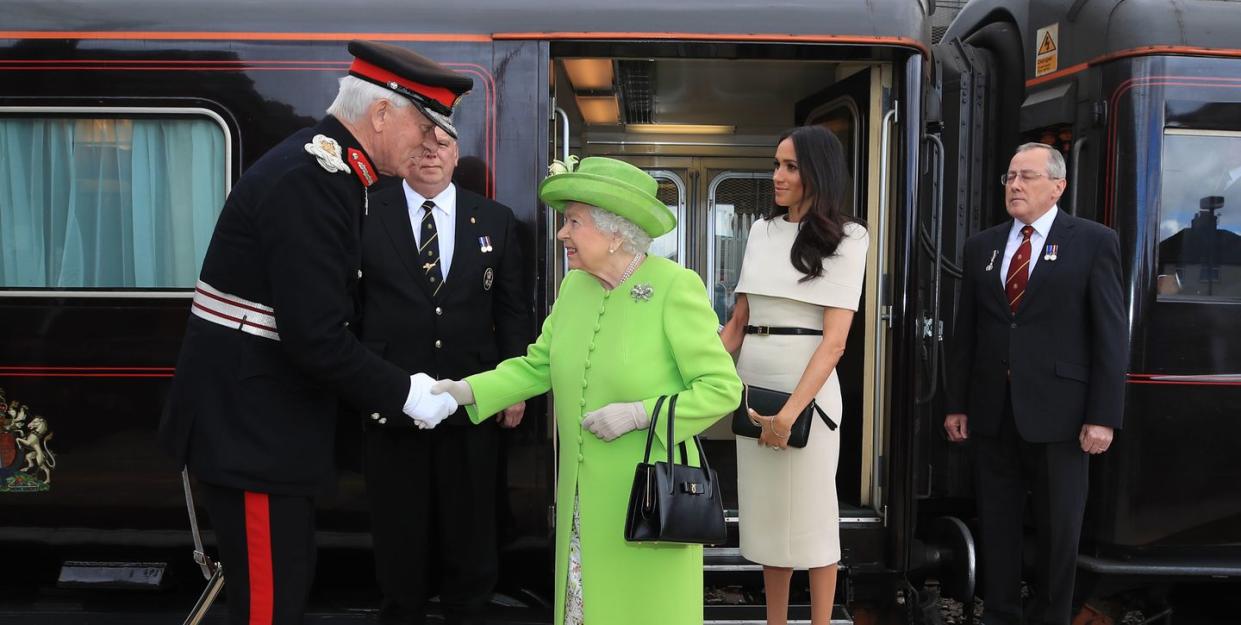
When it comes to travel, the royal family are hardly lacking in options. Though the royal yacht, Britannia, was decommissioned in 1997, they still count amongst their collection another equally historic mode of transport—the Royal Train.
Inspired by the documentary Secrets of Royal Travel which premieres November 15 on PBS at 10 p.m. ET (catch a sneak peek above) we're taking a look at the storied and often secretive history of this regal locomotive.
Queen Victoria became the first royal to take a train in 1842.
Though her husband Prince Albert was a great fan of locomotives, Victoria was initially a little more reticent about the idea of a royal train. It was only at Albert's urging that, at the age of 23, she finally agreed to try it out, becoming the first royal ever to travel by rail when she took a train from Slough to Paddington.
"[The Royal Train] was vitally important to Victoria's reign," explains royal historian Kate Williams. "She saw traveling the country as her duty, whereas monarchs didn't necessarily think that before. They were quite happy to sit in their palaces and not really go touring. Victoria has a completely different attitude, in which she feels very strongly that it's her job to go traveling around as much of Britain as she can, so the Royal Train makes it easier for her."
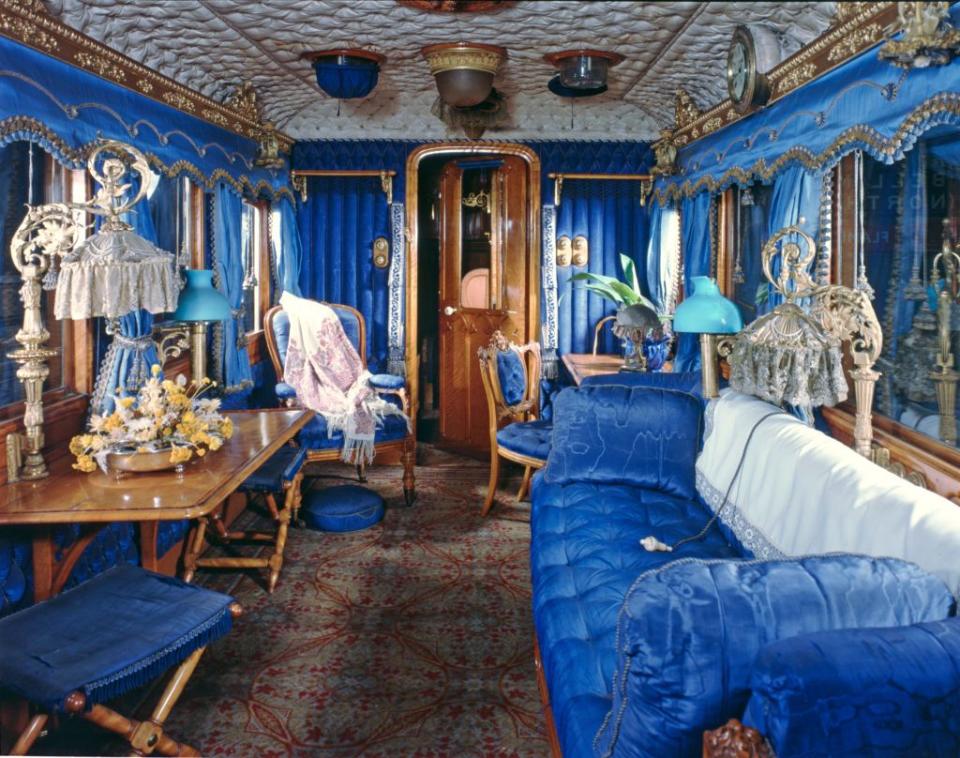
The queen clearly took to the convenience, commissioning a private set of train cars for herself in 1869. Costing £700 of her own money (approximately $60,000 today), the cars were painted in 23-carat gold paint and decked out in silks and satins. Over the years, it was also upgraded with then-cutting edge modern technology like electric lighting in the 1890s, and an onboard toilet,which Victoria refused to use, preferring to have the train stop for her to take bathroom breaks every few hours.
In fact, Williams says, in 1866 a train station was even built in the village of Ballater so that the Queen could use the train to travel more easily to Balmoral, a longtime favorite royal getaway.
The Royal Train was a state secret until 1946.
Understandably, information about royals travels has historically been carefully guarded, and the Royal Train was no exception for much of its life. During WWI, King George V, Queen Elizabeth II's grandfather, used it not only to travel around the country but also as lodgings, as he felt it was inappropriate to ask his subjects to arrange accommodations for him during those resource-strapped times, according to Williams.
Likewise, his son, King George VI, used it to visit areas of the country that were being bombed by the Germans during WWII. That decision led to a major refurbishment of the train for security reasons, replacing the white-roofed wooden cars with a 56-ton armor plated version filled with security measures, including special cabinets to store top secret documents.

It wasn't until after the end of the war that the existence of the train was revealed to the public, but even today, the details of each Royal Train voyage are guarded—even the train's own staff are not informed of which of the royals will be traveling with them.
The latest Royal Train was presented to Queen Elizabeth in 1977.
To mark her Silver Jubilee tour, Her Majesty received the modern version of the Royal Train. Over the years it's been updated, including a £320,000 renovation in the '80s according to Secrets of Royal Travel, which added protections to defend against machine gun fire, rockets, and bombs. In addition to beefing up the safety of the train, the Queen, Prince Philip, and Prince Charles all had input on the design, incorporating the occasional quirky touch like a shaving mirror mounted by the toilet for Prince Philip.
Unlike Queen Victoria's opulent interiors, the current Royal Train's 9 cars are more subdued in their design. “Everyone presumes that the royal train is extremely luxurious, and it’s a bit like the Orient Express but in practice it’s more functional than flamboyant,” royal historian David McClure said in the documentary. But that understated look is just as much a part of Queen Elizabeth's style as gilding and tassels were Victoria's. "The way the Queen decorates all of her private areas is really quite practical, so the fact that the train is is not surprising; that's just what she likes," says Williams.
And like it she clearly does—the Royal Train remains a firm favorite of the Queen, who has said it's one of the few places where she can truly relax in privacy.
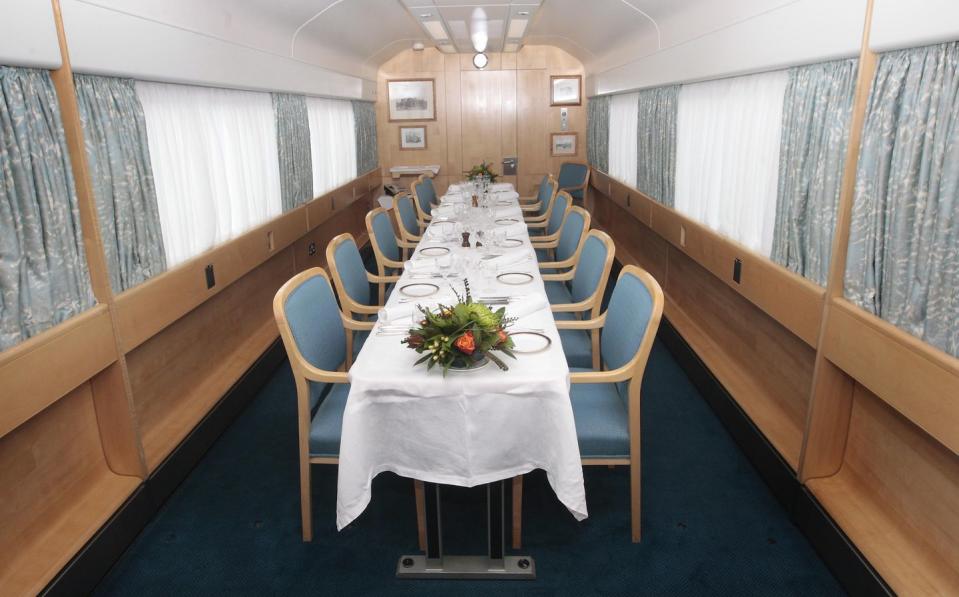
It offers royal-worthy dining.
While Queen Victoria refused to eat while on the train (she considered it bad for digestion) dining on the Royal Train has a long history. King Edward VIII insisted that all of the proteins serves on the train be hunted or fished from his own properties. Prince Charles is less demanding, requiring only that the produce served in the train's 12-set dining car be locally sourced and served on his own monogram china.
And a tub.

Queen Victoria wasn't the only royal to make train plumbing history. Under the reign of George V, the Royal Train was outfitted with what appears to be the first bathtub ever placed on a train. It's a feature that has stood the test of time, though not always the easiest one to use.
The tub used by Queen Elizabeth's parents, George VI and Elizabeth Bowes-Lyon, boasts a red line part way up its interior to mark the water level. The measure was common during the rationing of WWII to save on the fuel used to heat bath water, but aboard the train it may have served another purpose—to prevent sloshing as the train moved. Queen Elizabeth reportedly takes a less austere measure to prevent bath spills, simply having the trail pull to a stop on a side rail, according to Secrets of Royal Travel.
It's never been the speediest.
When it comes to royal train travel, don't expect breakneck speeds. Queen Victoria set strict limits on how fast she would allow the Royal Train to travel—40 miles per hour during the daytime, 30 at night. This may have been due to a widely held belief at the time that moving at too high a rate of speed might render a person insane.
While we've long-since evolved beyond such beliefs, the modern Royal Train still keeps a sedate pace compared to other passenger trains on the rails—while the fastest trains in the U.K. typically run at around 200 mph, the Royal Train tends to go about 70 mph. In fact, the modern Royal Train even has a staff member dedicated to routing the faster trains around them so as to avoid causing delays on the rails. And though they may not be known for speed, the staff of the Royal Train make up for it in precision, reportedly taking pride in consistently arriving within 15 seconds of their projected arrival.
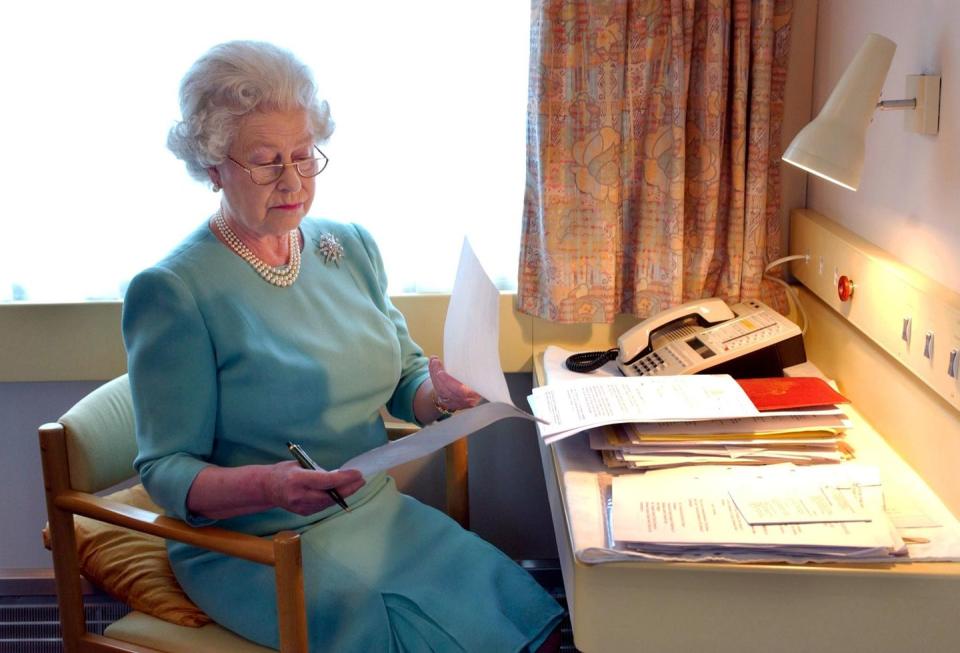
Prince Harry has never ridden it.
As if being the personal transport of the royal family wasn't exclusive enough, the Royal Train is even more private. “The Royal Train is actually only for the foremost senior members of the royal family," Emily Andrews, a royal commentator for The Sun explains in Secrets of Royal Travel. "At the moment that is the Queen, the Duke of Edinburgh, Prince Charles, and Camilla the Duchess of Cornwall."
While other royals and guests do sometimes get to partake of the train's convenience at the invitation of the senior royals, it's not an honor conveyed to many. While there's a chance that Prince William could have ridden the train before, Prince Harry and Kate Middleton have reportedly never been aboard. Meghan Markle, on the other hand, was invited by the Queen to join her on the rails for a royal engagement in Cheshire in 2018.
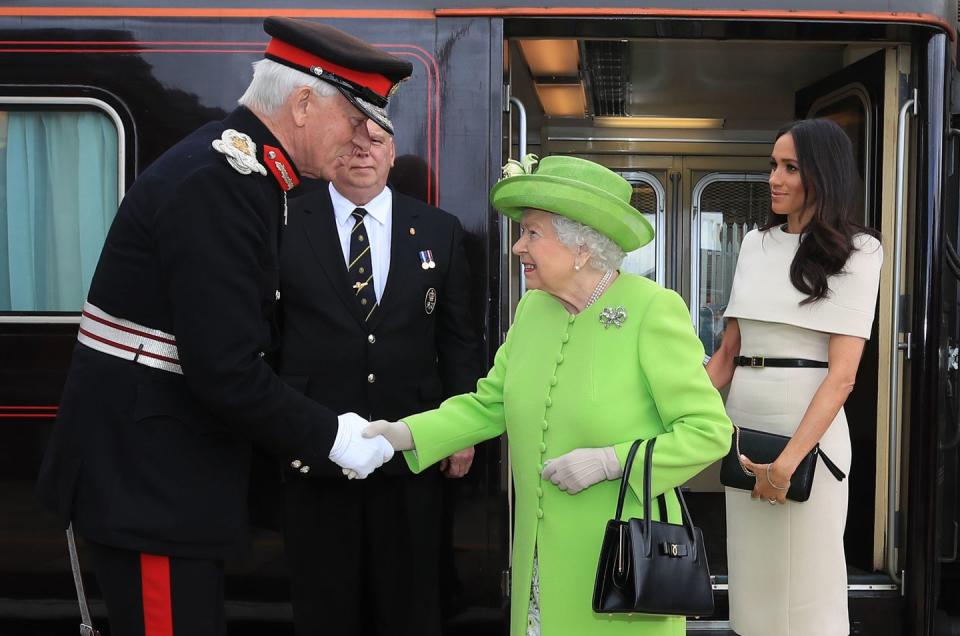
It's expensive.
Train travel may be more old fashioned that flying, but that doesn't mean it's cheaper. In fact, according to Secrets of Royal Travel, a trip in the Royal Train is approximately four times more expensive than traveling by plane, costing around £52 per mile, compared to £12 by air. The expense has occasionally caused some controversy since, like all of the royal family's official travel, the Royal Train is paid for by the Sovereign Grant, a taxpayer-funded grant given to the Queen every year to cover the official expenses of the monarchy.
Given that the government's decision not to fund future royal yachts is what led to the decommissioning of the Britannia, some have wondered if the Royal Train's days are numbered. However the royal family have consistently insisted that the train is integral to royal life and the performance of their duties.
You Might Also Like

